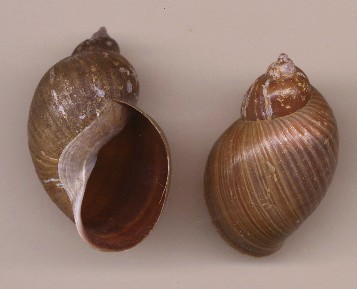Reproduction
Reproduction in the land snail Bulimnea megasoma is quite interesting. The life span of the snails has been said to be anywhere between 4 and 5 years and the eggs are laid usually in the summer time, between May and July (McKillop 1993).
Bulimnea megasoma, like other freshwater snails, are monoecious, meaning they do not have separate sexes and are hermaphrodites (AnimalDiversity 2006).
Another interesting thing about reproduction in Bulimnea
megasoma is that since the sexes are not separate, each
snail is capable of self- or cross-fertilization. So
essentially, each snail could, if they wanted, go to a different
habitat and start creating a whole new population. That's so
awesome! Being able to make your own population in a newly
discovered habitat would be a great advantage, in my opinion, to
keep the species alive and going
("Chapter 8: Freshwater Snails"
2011).
To add to that, one of the things unique to this freshwater snail is the fact that the male reproductive organs are the largest out of the whole Bulimnea family (Baker 1911).
Bulimnea megasoma also require some specified
conditions in order to have optimal reproduction. Usually, most
of the species reproduce in habitats that are between 22 and 26
degrees Celsius, but are never found in salty water habitats.
Weird right? But if the temperature and food sources are not
suitable, then reproduction decreases immensely
("Chapter 8: Freshwater Snails"
2011).
Their eggs are laid all together and go through larval stages and are born with tiny shells. When the eggs are laid, they are deposited in a gel like film that is attached to some form of substrate, like a plant or rock, along a water edge. It even takes the shape of what looks like a developing shell (AnimalDiversity 2000, Ghesquiere 2007)!
Also, in the entire life span of Bulimnea megasoma,
a snail can lay up to one thousand eggs and sometimes those eggs
can last for an entire year before developing
("Chapter 8: Freshwater Snails" 2011).

